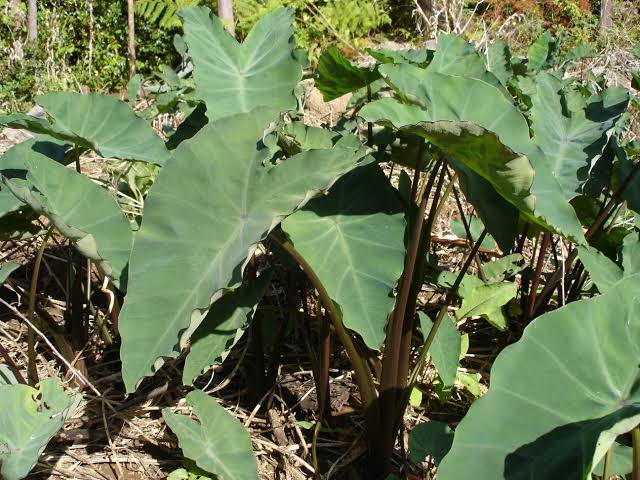Nutritional facts eating green taro vegetables or gabi in tagalog.

What Is Taro Good For?
Magnesium can helps to get a sound sleep. Those who have low nutrient consumption and low absorption of vitamins are at excessive probabilities of getting insomnia. The find out about suggests that the human beings with magnesium dietary supplements have amplify in sleep time, high quantity of melatonin and low degree of cortisol which is associated to stress. Magnesium helps to decrease the signs of insomnia effectively, enhance sleep efficiency, sleep onset and sleep time.
Taro – Eat smooth and green. Eat Organic. Eating sparkling veggies ...
In the southeastern United States, this plant is identified as an invasive species. many populations can be generally discovered developing close to drain ditches and bayous in Houston, Texas.
In Manipur, any other north-eastern state, taro is acknowledged as pan. The Kukis calls it bal. Boiled bal is a snack at lunch alongside with chutney or hot chili-flakes without being cooked as a fundamental dish alongside with smoked or dried meat, beans, and mustard leaves. Sun-dried taro leaves are later used in broth and stews. It is extensively reachable and is eaten in many forms, either baked, boiled, or cooked into a curry with hilsa or with fermented soybeans known as hawai-zaar. The leaves are additionally used in a extraordinary regular dish known as utti, cooked with peas.
May Reduce Your Risk of Heart DiseaseThe fiber and resistant starch in taro root may additionally assist minimize your hazard of coronary heart disease.Substantial research has determined that humans who devour extra fiber have a tendency to have lower fees of coronary heart disorder .One find out about determined that for every extra 10 grams of fiber ate up per day, the hazard of loss of life from coronary heart disease diminished with the aid of 17% .This is believed to be due in phase to fiber’s cholesterol-lowering effects, however lookup is ongoing .Taro root contains greater than 6 grams of fiber per cup (132 grams) — greater than twice the quantity located in a related 138-gram serving of potatoes — making it an excellent supply of fiber.
It is additionally used for anthocyanin find out about experiments, specially with reference to abaxial and adaxial anthocyanic concentration.
A latest study has published honeycomb-like microstructures on the taro leaf, which makes the leaf superhydrophobic. The measured contact perspective on this leaf in this find out about is round 148°.
In the Philippines taro is generally known as gabi, abi, or avi and is broadly reachable all through the archipelago. Its adaptability to marshland and swamps make it one of the most frequent veggies in the Philippines.
The leaves, stems, and corms are all consumed and shape section of the neighborhood cuisine. A famous recipe for taro is laing from the Bicol Region; the dish's essential ingredients are taro leaves (at instances such as stems) cooked in coconut milk, and salted with fermented shrimp or fish bagoong.
It is once in a while closely spiced with pink hot chilies known as siling labuyo. Another dish in which taro is regularly used is the Philippine country wide stew, sinigang, though radish can be used if taro is now not available. This stew is made with pork and beef, shrimp, or fish, a souring agent (tamarind fruit, kamias, etc.) with the addition of peeled and diced corms as thickener. The corm is also organized as a fundamental ingredient for ginataan, a coconut milk and taro dessert.